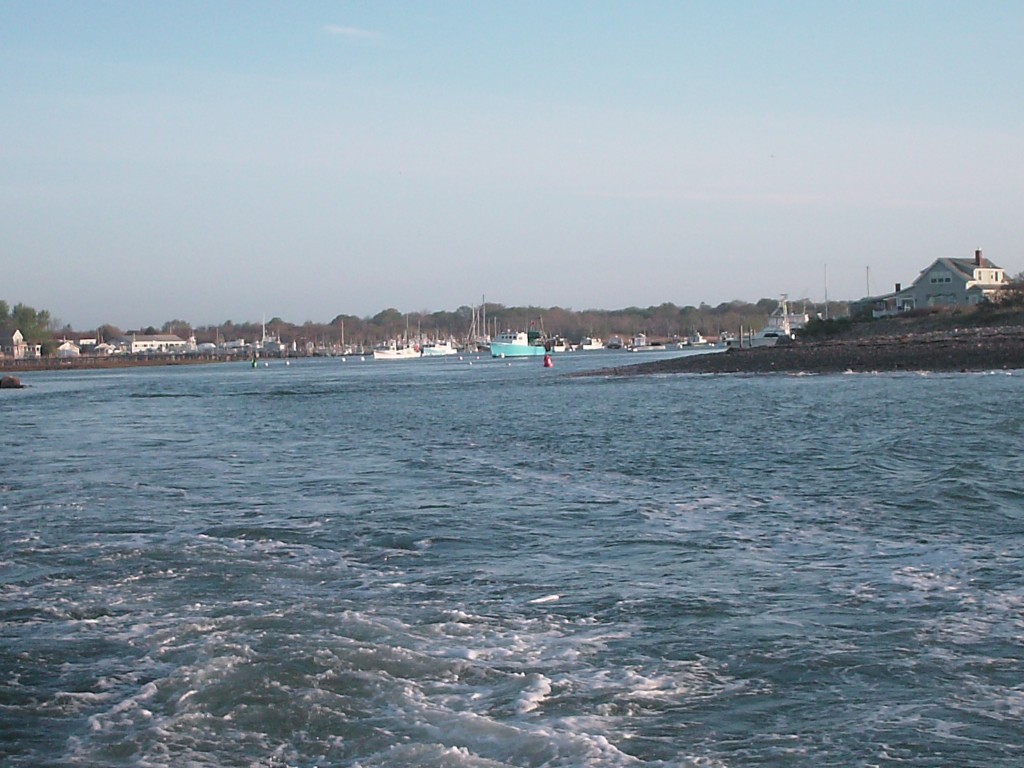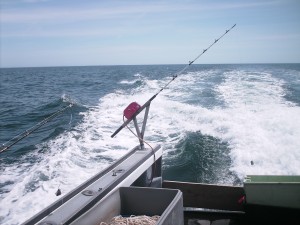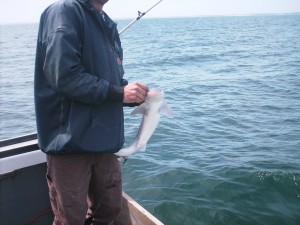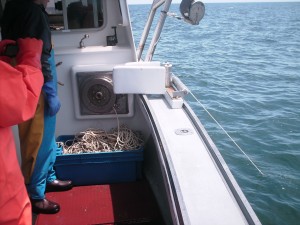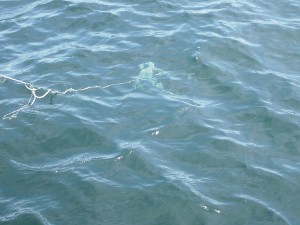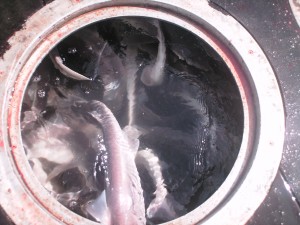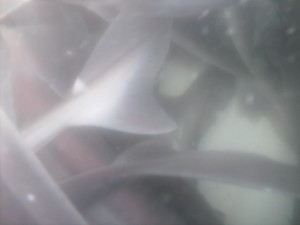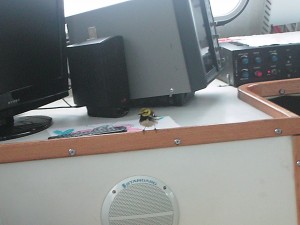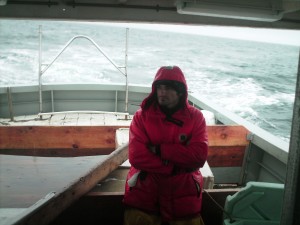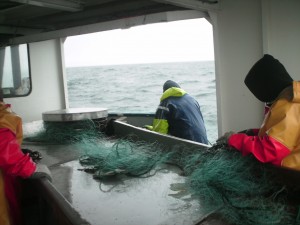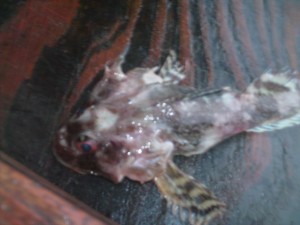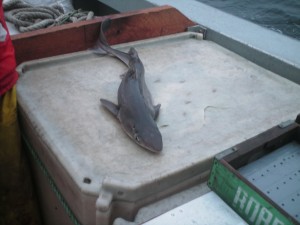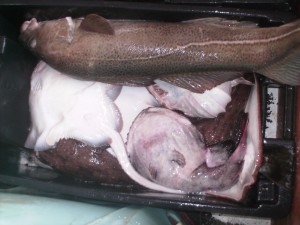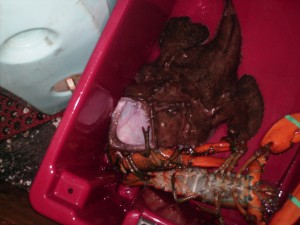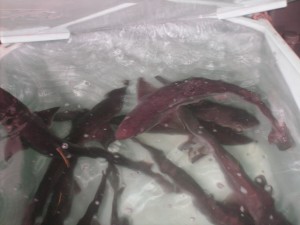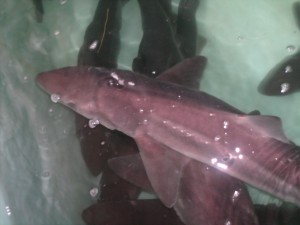The past few posts have been quick short-form recaps of what’s been going on that day. Now that I’m back in town (after we called the trip early due to weather) I finally have a chance to upload the pictures from the trip and give a detailed(ish) description of what we were trying to accomplish and how the weather stopped us. Let’s do this.
The goal of this trip was to tag a whole mess of dogfish with conventional floy tags and surgically implant acoustic transmitters into a handful of them as part of a larger project attempting to figure out whether there are one or two stocks of spiny dogfish in the Atlantic. The hypothesis we’re testing is that, rather than the entire east coast from Canada to Florida being one uniform stock of spiny dogfish (which is what current management is based on), there are actually two stocks of dogfish on this side of the Atlantic: one ranging from Southern New England to the Carolinas (the one I’ve been playing with) and one from the north side of Cape Cod and Canadian waters. Both of these stocks should have their own set migration pattern and this situation more closely matches what fishermen claim to be seeing. So the idea is to tag a ton of dogfish and see whether there are any returns from the northern New England stock south of Cape Cod, and vice-versa. The acoustic transmitters will be picked up on receivers set up all along the east coast and should help provide multiple data points from one individual.
The team for this particular trip consisted of me, Andrea, Lyndell (after reading this you should go over to People, Policy, Planet and leave a comment about how she needs to post more), and Dr. Rulifson. We would be capturing, tagging, and performing minor surgery on our sharks aboard longline and gillnet vessels north and south of Cape Cod, and on a normal year there are plenty of dogfish in New England waters by now. This was not a normal year.
Due to some weather weirdness involving a low-pressure cell that, as of this writing, is still hanging out south of Long Island, the weather in Massachusetts was profoundly unseasonal. I’ve lived in New England most of my life and have rarely seen weather this miserable. Rain and wind kept us off the water the first few days we were up there, and even when we managed to get out half of our days at sea were in conditions that would most technically be described as “liquid crap.” This was an issue especially for the surgeries, since it’s usually not great to have rain and seawater falling into an open wound, especially when you want the animal to stay alive long enough to provide plenty of data.
As a result of the cold weather, the dogfish, as you may have gathered from a previous post, were a little difficult to find. Our first day out we tooled around Cape Cod Bay for an entire day and stumbled upon a huge school of dags at the very last place we checked, which of course was only a short steam from where we started. The second day we caught ten. The third day we had two dozen and it felt like a victory. The last day we got over a hundred but this was still not enough (and still not a great number for this time of year).
The fishermen we were working with were good guys and I certainly can’t fault them for putting effort into helping us out. Mike and Max covered the longline front, while Tom and Ryan braved some hideous weather to take us out gillnetting. Though we didn’t get everything accomplished that we wanted, we did get out on the water, got some tags and transmitters out, and most importantly saw some cool stuff.
Here’s some pictures, with interspersed commentary.
The longline operation was pretty slick. Mike and Max picked sites based on how they looked on the fish finder, then used the try lines to determine if it was even worth setting the line. Once we found some hungry dogfish, they came in fast and fierce. The first day out on the longliner was definitely our most productive day.
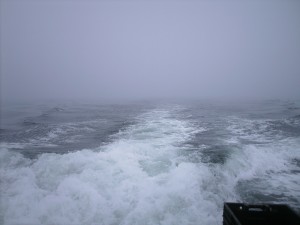
The second day longlining was foggy but flag calm. Too bad we caught more cod than dogfish. A bunch of useless cod!
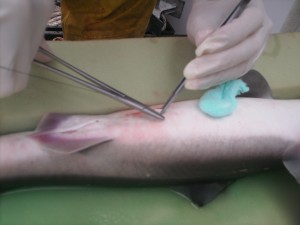
Finishing off a successful surgery. Unfortunately I didn't get any great shots of the actual surgery because I was too busy being helpful (for a change).
One thing that really struck me about gillnetting and something I wasn’t all that prepared for: it’s actually pretty selective as a fishing method. The mesh size used on the first day was 7-inch, and sure enough most of what the net pulled up was target species well over the legal size limits. The gillnetters we worked with were using flounder gear, which means most of the net basically sits on the bottom. So most of what we got were demersal or benthic species, including a shockingly high number of lobster. I was surprised after hearing all the debate over gillnetting down here in North Carolina at just how selective a method of fishing it can be. That said, it’s certainly no tickling contest for the fish, though the dogfish seemed to be alright if we got them out of the net quickly. We also saw the most non-dogfish species on the gillnet days.
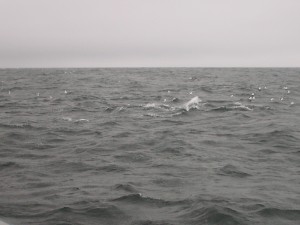
A flock of gannets and a pod of dolphins were attacking baitfish right next to the boat. For all the crap I give dolphins, they do look cool feeding. Too bad they didn't really show up in this picture.
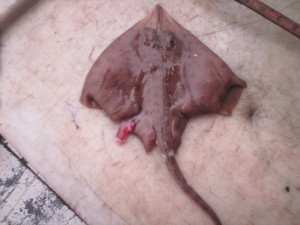
Baby barndoor skate. It's wings aren't damaged, I just couldn't get it to unroll them. This lil' guy will grow up to be the largest skate in New England.
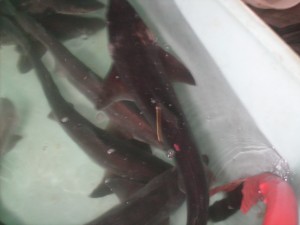
Dogfish subjected to surgery were tagged for later ID and allowed to recuperate in the live well before being released.
And finally, to close out the pictures from the Cape Cod trip, this was parked on the pier when we got back to the harbor on our last day out.
Unfortunately we decided to cut our losses and head back when it became apparent that the weather was only getting worse, so we never got a chance to sample south of Cape Cod (which would have had us steaming out of my old stomping grounds in Rhode Island). There are plans to go back and try to finish the job in June, so maybe I’ll be back up there with my trusty (though not gracefully aging) dive camera that I insist on using above water. Science!
